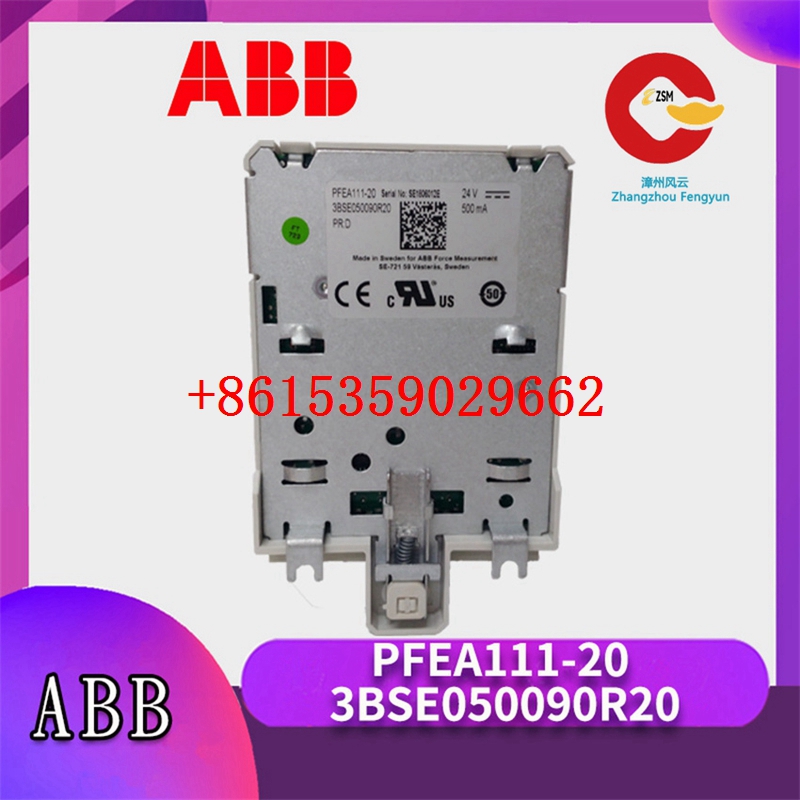Technical Parameters of ABB UF C911 B101 3BHE037864R0101 / 3BHE037865 P201 REV.C CONTROL BOARD

1. General Information
The ABB UF C911 B101 3BHE037864R0101 / 3BHE037865 P201 REV.C control board is a crucial component within ABB’s industrial control and power conversion systems. It is designed to provide precise and reliable control functions, ensuring the efficient and stable operation of various industrial equipment such as drives, motors, and power – related machinery.
2. Hardware Specifications
2.1 Processor and Memory
- Processor: Equipped with a high – performance, industrial – grade microprocessor. This processor is optimized for real – time control tasks, capable of executing complex algorithms at high speeds. For example, it can handle multiple control loops simultaneously with minimal latency, ensuring accurate and responsive control of the connected equipment.
- Memory:
- RAM: Features a sufficient amount of Random Access Memory to store program code, temporary data, and intermediate results during the execution of control programs. The large RAM capacity allows for the implementation of advanced control strategies and the handling of large data sets without performance degradation.
- ROM: Contains non – volatile Read – Only Memory that stores the firmware of the control board. The firmware provides the fundamental operating instructions and control logic for the board, and it is designed to be highly reliable and resistant to data corruption.
2.2 Input/Output (I/O) Interfaces
- Digital I/O:
- Number of Channels: Provides a set number of digital input and output channels. These channels are used to interface with digital sensors, switches, and actuators. For instance, digital inputs can be used to detect the status of limit switches, while digital outputs can control the operation of relays and contactors.
- Signal Levels: Supports standard digital signal levels such as 24V DC, ensuring compatibility with a wide range of industrial devices.
- Analog I/O:
- Number of Channels: Includes a certain number of analog input and output channels. Analog inputs are used to measure continuous variables such as temperature, pressure, and speed, while analog outputs are used to control the speed, torque, or position of motors and other analog – controlled devices.
- Resolution and Accuracy: Offers high – resolution analog – to – digital (A/D) and digital – to – analog (D/A) conversion. For example, the A/D converter may have a 16 – bit resolution, providing accurate measurement of analog signals with a low error rate.
2.3 Communication Interfaces
- Ethernet:
- Speed: Supports high – speed Ethernet communication, typically with a data transfer rate of 10/100 Mbps or higher. This allows for seamless integration with other devices in the industrial network, such as Human – Machine Interfaces (HMIs), Programmable Logic Controllers (PLCs), and Supervisory Control and Data Acquisition (SCADA) systems.
- Protocols: Compliant with standard Ethernet protocols like TCP/IP, UDP, and Modbus TCP, ensuring compatibility with a wide variety of industrial networking equipment and software applications.
- Serial Communication:
- Types: Includes serial communication ports such as RS – 232 and RS – 485. These ports are used for connecting to legacy devices and for local communication between the control board and other nearby components.
- Baud Rate: Supports a range of baud rates to accommodate different device requirements and communication distances.
3. Power Supply
- Input Voltage Range: Designed to operate within a specified input voltage range, which can vary depending on the specific application and system requirements. For example, it may support an input voltage range of 24V DC ± 20%, providing flexibility in power supply selection and ensuring stable operation even with voltage fluctuations.
- Power Consumption: Has a relatively low power consumption, which helps to reduce operating costs and minimize heat generation within the control cabinet. The low power consumption also contributes to the overall energy efficiency of the industrial system.
4. Environmental Specifications
- Operating Temperature Range: Can operate reliably within a wide temperature range, typically from – 20°C to + 70°C. This allows the control board to be used in various industrial environments, including those with extreme temperature conditions such as outdoor installations or high – temperature manufacturing facilities.
- Humidity Tolerance: Withstands a certain level of humidity, usually up to 95% non – condensing. This protects the internal components of the control board from moisture – related damage and ensures long – term reliability in humid industrial environments.
- Vibration and Shock Resistance: Built to withstand typical levels of vibration and shock encountered in industrial settings. For example, it can withstand vibrations with a frequency range of 5 – 500 Hz and an acceleration level of up to 5G, ensuring stable operation even in the presence of mechanical disturbances.
5. Mechanical Dimensions
- Form Factor: Features a compact and rugged form factor, suitable for installation in standard industrial control cabinets. The mechanical design ensures easy mounting and integration with other control components, and it is designed to meet industry – standard dimensions for compatibility and ease of use.
- Weight: Has a relatively light weight, which simplifies handling and installation processes. The light weight also reduces the load on the mounting structure and makes it easier to transport and install the control board in different locations.
In conclusion, the ABB UF C911 B101 3BHE037864R0101 / 3BHE037865 P201 REV.C control board is a well – engineered and reliable component that offers a comprehensive set of technical specifications to meet the demanding requirements of industrial control and power conversion applications.


